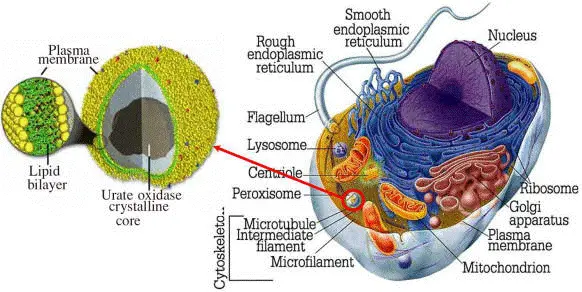.🧬 The Fundamental Unit of Life – Detailed Notes (Class 9)
🧠 Why Study Cells?
Every living being, from a tiny bacterium to a huge whale, is made up of cells. These cells are the building blocks of life. Just like bricks form buildings, cells form organisms.
🔬 Discoveries that Led to Cell Biology
| Scientist | Year | Discovery |
|---|---|---|
| Robert Hooke | 1665 | Discovered dead cells in cork using a microscope. He coined the term “cell”. |
| Anton van Leeuwenhoek | 1674 | First to observe living cells (in pond water). |
| Robert Brown | 1831 | Identified the nucleus, an important part of the cell. |
| J.E. Purkinje | 1839 | Used the term “protoplasm”, which refers to the jelly-like substance inside cells. |
| Schleiden and Schwann | 1838–39 | Formulated the Cell Theory. |
| Rudolf Virchow | 1855 | Proposed that new cells arise from pre-existing cells. |
📚 Cell Theory (Three Major Postulates)
-
Cell is the structural and functional unit of all living organisms.
-
All organisms are composed of one or more cells.
-
New cells originate from existing cells through cell division.
🧫 Types of Organisms
-
Unicellular Organisms: Organisms made of a single cell, e.g., Amoeba, Paramecium. All life processes occur in this one cell.
-
Multicellular Organisms: Made of many cells working together. Cells may perform different functions (e.g., muscle cells, blood cells in humans).
🧩 How Do Multicellular Organisms Develop from a Single Cell?
In multicellular organisms like humans, life begins as one single fertilized cell. This cell divides repeatedly to form millions of specialized cells, each with unique functions. This process is known as cell division and differentiation.
🧬 Cell Shape & Size
-
Cells can be round, oval, spindle-shaped, or irregular.
-
Shape depends on the function:
-
Red Blood Cells (RBCs) are round to travel through blood vessels.
-
Muscle cells are long and contractile.
-
-
Some cells, like white blood cells (WBCs) and Amoeba, can change shape.
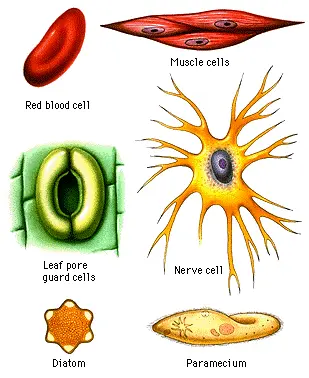
🔧 Major Parts of a Cell
Every living cell consists of three major components:
-
Plasma Membrane (Outer covering)
-
Cytoplasm (Jelly-like internal fluid)
-
Nucleus (Control center)
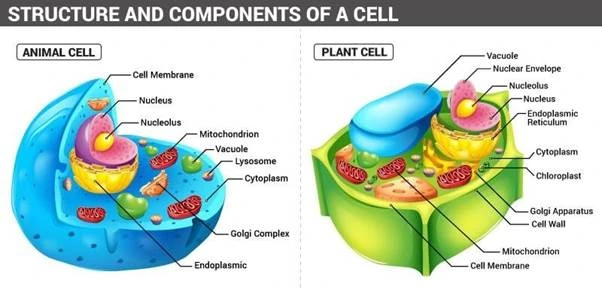
🧱 Plasma Membrane (Cell Membrane)
-
Thin, flexible layer that encloses the cell.
-
Made of lipids and proteins (as per the Fluid Mosaic Model).
-
It is selectively permeable—only certain substances can pass through.
-
Functions:
-
Controls entry/exit of materials.
-
Maintains balance inside the cell.
-
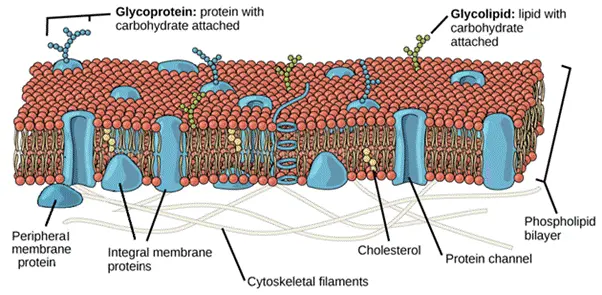
🔄 Movement Through Membrane
🌀 Diffusion
-
Movement of gases (like O₂, CO₂) from high to low concentration.
-
No energy is needed (passive process).
💧 Osmosis
-
Special type of diffusion: movement of water across a semi-permeable membrane.
-
Water moves from higher to lower concentration.
Osmosis Scenarios:
| Solution Type | Water Movement | Effect on Cell |
|---|---|---|
| Hypotonic | Water enters cell | Cell swells |
| Isotonic | No net movement | Cell remains same |
| Hypertonic | Water leaves cell | Cell shrinks |
📥 Endocytosis
A process where the cell membrane surrounds and engulfs particles (like food or bacteria) into the cell.
🧱 Cell Wall (Plant Cells Only)
-
Tough, rigid outer covering present in plants, fungi, bacteria.
-
Made of cellulose (in plants).
-
Provides:
-
Shape
-
Support
-
Protection from bursting during osmosis
-
💧 Plasmolysis
-
Occurs in a hypertonic solution.
-
Water moves out → cytoplasm shrinks and detaches from the cell wall.
-
Seen in plant cells.
📌 Dead cells cannot perform osmosis.
🧠 The Nucleus – The Control Centre
-
Surrounded by a nuclear membrane with pores.
-
Contains DNA (in chromosomes) which controls all cellular activities.
-
Contains:
-
Nucleolus – makes ribosomes
-
Chromatin – thread-like DNA structures
-
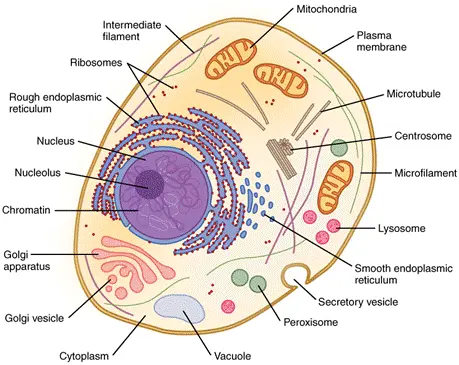
📎 Nucleoid (In Prokaryotic Cells)
-
A region in prokaryotic cells where DNA is found.
-
Not surrounded by a nuclear membrane.
-
Hence, the nucleus is undefined.
-
Present in organisms like bacteria.
🧫 Types of Cells – Prokaryotic vs Eukaryotic
| Feature | Prokaryotes | Eukaryotes |
|---|---|---|
| Nucleus | No true nucleus (nucleoid) | True nucleus with membrane |
| DNA | Single circular chromosome | Multiple linear chromosomes |
| Cell Organelles | No membrane-bound organelles | Present |
| Reproduction | Asexual | Both |
| Size | Smaller | Larger |
| Examples | Bacteria, Blue-green algae | Plants, Animals, Fungi |
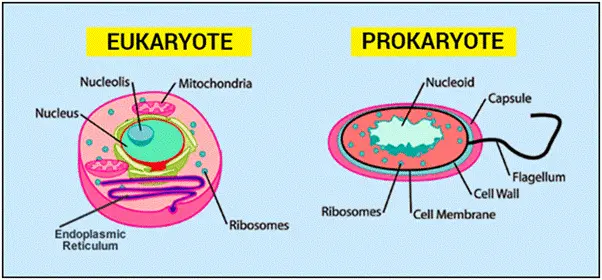
🌊 Cytoplasm
-
Gel-like fluid inside the plasma membrane.
-
Contains organelles, water, salts, enzymes.
-
Functions:
-
Site of metabolic reactions
-
Supports organelles
-
Transports substances
-
🏭 Cell Organelles (Eukaryotic Cells)
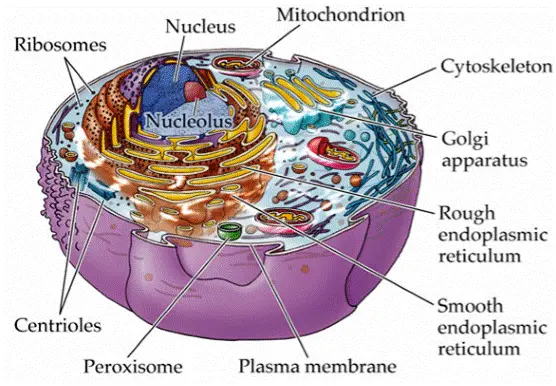
🧵 Endoplasmic Reticulum (ER)

-
Network of membranes connecting nucleus to cell membrane.
-
Two types:
-
Rough ER: Has ribosomes; makes proteins.
-
Smooth ER: No ribosomes; makes lipids, detoxifies drugs.
-
-
Also involved in Membrane Biogenesis (formation of membranes).
📦 Golgi Apparatus
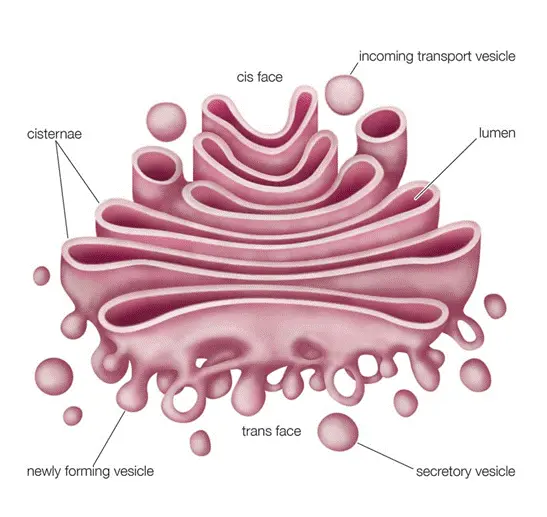
-
Discovered by Camillo Golgi
-
Stack of flattened sacs (cisternae)
-
Functions:
-
Modifies, stores, and transports proteins
-
Forms lysosomes
-
Synthesizes complex sugars
-
🧼 Lysosomes – Cleaners of the Cell
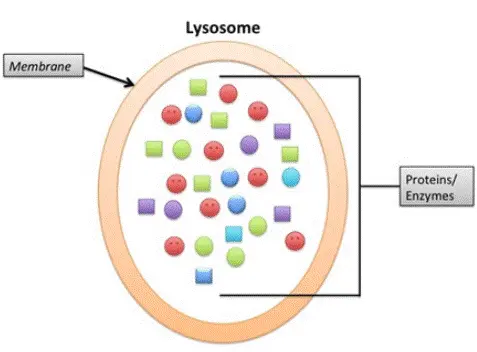
-
Single membrane vesicles containing digestive enzymes
-
Digest damaged cell parts or foreign particles
-
Called “Suicide Bags” – can destroy their own cell if needed
⚡ Mitochondria – Powerhouse of the Cell
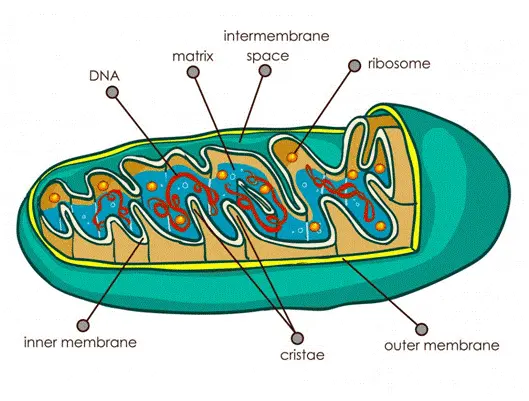
-
Double membrane, contains its own DNA
-
Site of cellular respiration
-
Produces ATP (energy currency) for the cell
-
Cristae (inner membrane folds) increase surface area for energy production
🌿 Plastids (Plant Cells Only)
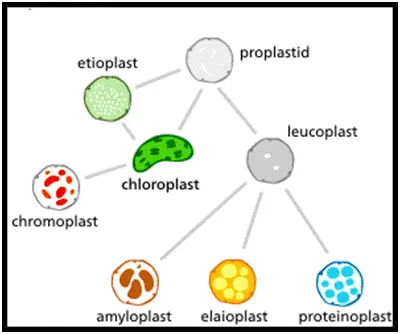
Types:
-
Chloroplasts – Green, perform photosynthesis
-
Chromoplasts – Colored (orange/yellow), provide pigment
-
Leucoplasts – Colorless, store starch, oil, proteins
🌱 Chloroplast Details
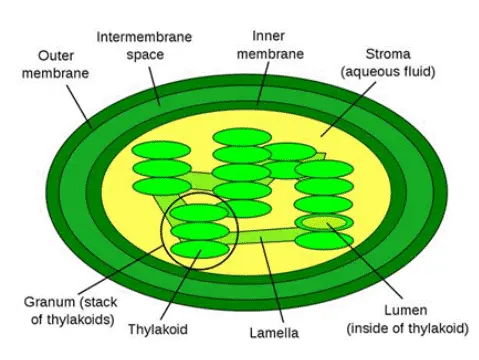
-
Contain chlorophyll and other pigments
-
Main parts:
-
Thylakoids – sites of light reaction
-
Grana – stacks of thylakoids
-
Stroma – fluid with enzymes
-
-
Functions:
-
Photosynthesis
-
Protein & starch synthesis
-
💧 Vacuoles
-
Storage sacs for water, food, waste
-
Larger in plant cells, smaller in animals
Types:
-
Sap Vacuoles – Store nutrients (plant cells)
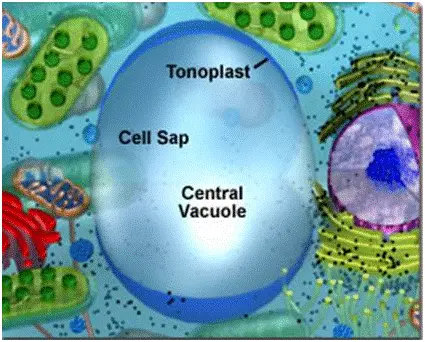
-
Contractile Vacuoles – Control water balance (e.g. Amoeba)
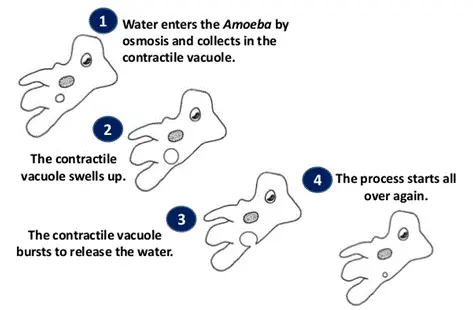
-
Food Vacuoles – Ingest and digest food (unicellular organisms)
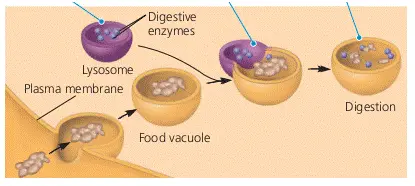
🌀 Centrioles
-
Found only in animal cells
-
Help in cell division
-
Form a structure called the centrosome
🧬 Ribosomes
-
Small structures that synthesize proteins
-
Found:
-
Floating freely in cytoplasm
-
Attached to ER
-
-
Found in both prokaryotic and eukaryotic cells
🧪 Peroxisomes
-
Contain oxidative enzymes
-
Break down fatty acids and alcohol
-
Abundant in liver cells
